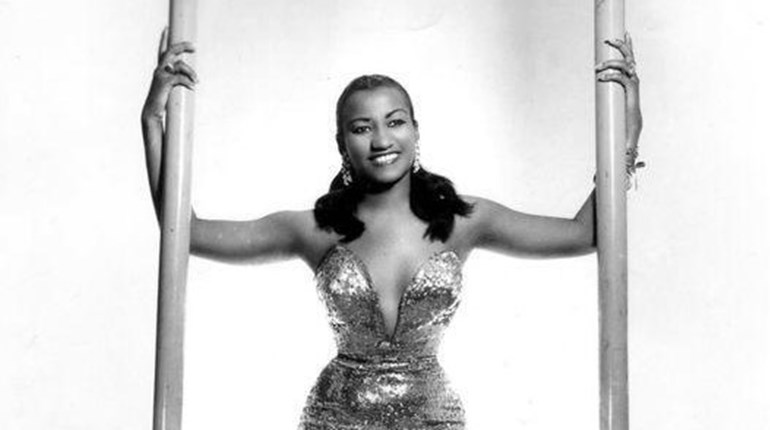¡Azúcar! Though the Queen of Salsa never officially lived in Florida, few performers are as influential in Miami as Celia Cruz. Cruz had a special place in her heart for Miami, one of her most frequent touring spots. Over her more than 60-year career, she left a permanent mark on salsa music, making her one of the most important figures in the history of Latin music.
Celia Cruz was born Úrsula Hilaria Celia Caridad Cruz Alfonso in Havana, Cuba in 1924. Though her father wanted her to become a teacher, Cruz had a passion for music that she pursued alongside a career in education. In 1947, however, Cruz won a radio singing competition, prompting her to pursue music professionally and enroll in Havana’s National Conservatory of Music to study vocal performance. Cruz went on to join the group La Sonora Matancera in 1950, with whom she would achieve international success and earn the nickname “Guarachera de Cuba” Guaracha is a musical rhythm that originated in Cuba.
In 1959, Fidel Castro’s rise to power prompted Cruz’s decision to leave Cuba and settle in the United States. Cruz vowed to never return while Castro was still in power and she never made it back to her beloved homeland. She continued her career in the United States, performing in Miami with many of the biggest names in Latin music, starting with Tito Puente in the 1960s and 70s. In 1962, she married Pedro Knight, a trumpet player in her band; the two remained married and devoted to each other for the rest of their lives.
To revamp her career, Cruz began performing with Fania Records in 1974, continuing through the late 1990s. She later joined Fania All-Stars and recorded and performed with other big names at the time, such as Ray Barretto, Willie Colón, La India, Oscar D’León and Johnny Pacheco. Over her career, she recorded more than 70 solo and collaborative albums. In addition to her music, she also appeared in nine films and two soap operas.
Cruz always remained an active recording artist and performer, even while fighting brain cancer that would take her life in 2003 at the age of 77. In accordance with her wishes, Celia Cruz’s body was flown to Miami for a two-day viewing before she was taken to her final resting place in New York. Tens of thousands of visitors flocked to her viewing at the Freedom Tower and memorial mass at Gesu Catholic Church.
Throughout her career, Cruz was known for her brilliant voice and flamboyant personality. Her costuming was equally bright, including sequined gowns, brightly colored wigs and custom high heeled shoes. She is remembered through countless memorials, shows, places and exhibitions across the United States, including: Calle Ocho being renamed Celia Cruz Way; Smithsonian’s “Azúcar!” exhibition at the National Museum of American History; a stamp from the U.S. Postal Service; the “Forever CELIA” exhibition at Miami’s American Museum of the Cuban Diaspora (2018-2019); and Celia, a musical based on Cruz’s life. The Celia Cruz Foundation continues to operate, raising money for underprivileged students who wish to study music.
